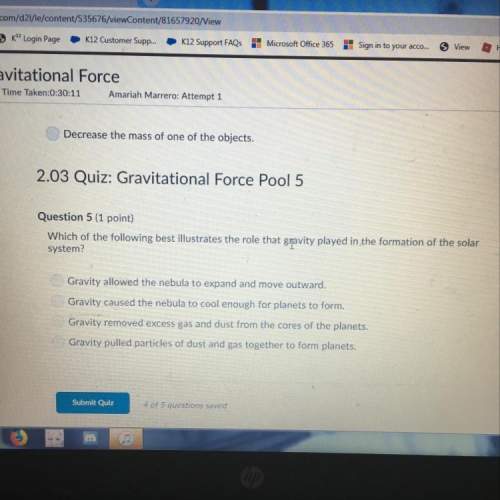
Chemistry, 21.04.2021 16:30, astultz309459
Use the scenario to answer the following question.
A group of students working in a chemistry lab is planning a procedure to neutralize 25.0mL of 2.0 M hydrochloric acid (strong acid) with
1,0 M potassium hydroxide (strong base). In their procedure they plan on adding an equal volume of the base to the acid.
What would be the expected outcome of carrying out this step as planned?
A The resulting pH will be equal to 7 because a strong base will neutralize a strong acid.
B. The resulting pH will be less than 7 because potassium hydroxide is less concentrated than the hydrochloric acid.
C. The resulting pH will be greater than 7 because potassium hydroxide is less concentrated than the hydrochloric acid,
D. The resulting pH will not be able to be determined because the concentrations of the acid and base are not the same

Answers: 1
Other questions on the subject: Chemistry

Chemistry, 22.06.2019 01:30, jaycie16
Quickly! brainliest if two people answer! 1. the blood has red blood cells, white blood cells and platelets. red blood cells carry oxygen to other cells in the body. cells need oxygen to live. white blood cells destroy certain germs. they protect our bodies from disease. which question is answered in this paragraph? (a) what is the role of blood vessels? (b) what type of cells are attached to bones? (c) what type of blood cell to clot your blood? (d) what are the different types of blood cells? 2. which sentence from the section "stem cells" best explains the role of stem cells? (a) when one kind of cell stops working, stem cells can . (b) they can turn into that cell and take its place. (c) scientists are studying new ways to use stem cells. (d) these cells can people heal faster. 3. read the selection from the section "nerve cells." nerve cells send messages to the rest of our bodies. these messages move between the brain, spinal cord and various organs. nerve cells are also called neurons. fill in the blank. a "neuron" is a (a) cell that moves information from the brain to other parts of the body (b) stem cell that has both an axon and a dendrite (c) cell that controls the fingers of a body (d) cell that makes up the spinal cord 4. some muscles in our body move without us telling them to. these are called involuntary muscles. some examples are the cardiac muscle cells inside the heart. these cells the heart relax and fill with blood. what is the best definition of "involuntary" based on the context clues? (a) something that happens on its own (b) trying hard to do something (c) something moving back and forth (d) easily moved
Answers: 2

Chemistry, 22.06.2019 05:50, mrylenastewart
What are transitions between a liquid and a solid called? identify which way they are transitioning
Answers: 2

Chemistry, 22.06.2019 08:00, stephstewart1209
Which of the following observations indicates that there is a small, dense, positively charged part in the center of an atom? some uncharged particles are scattered by a gold foil. all uncharged particles are attracted towards a gold foil. all positively charged particles pass straight through a gold foil. some positively charged particles bounce back from a gold foil.
Answers: 2

Chemistry, 22.06.2019 12:00, carvajalj2520
Explain what happens at the saturation point when adding salt to water at room temperature.
Answers: 1
Do you know the correct answer?
Use the scenario to answer the following question.
A group of students working in a chemistry lab...
Questions in other subjects:






Mathematics, 27.06.2020 02:01










